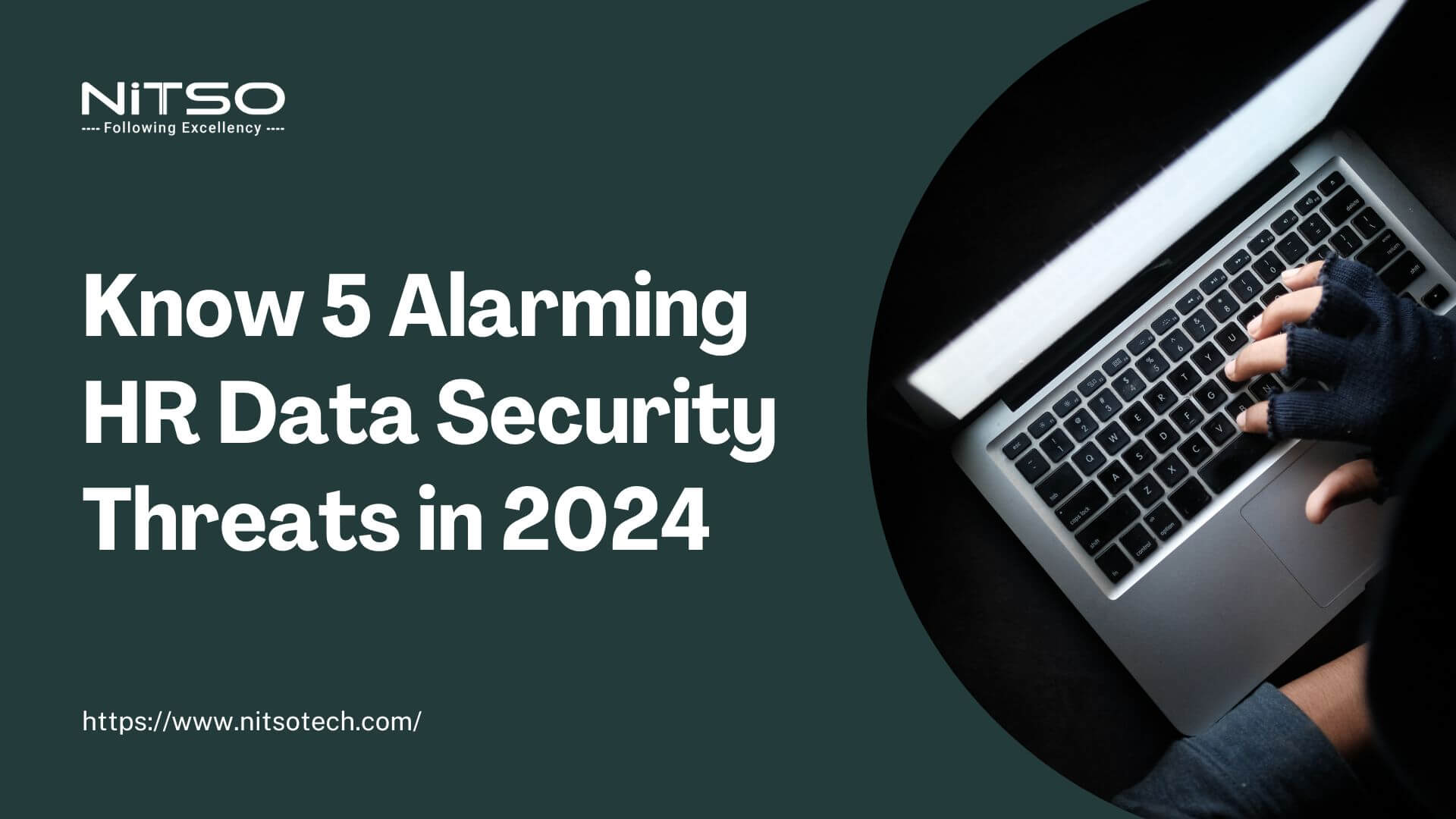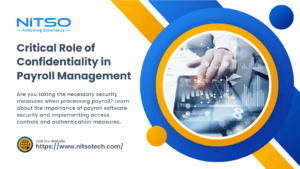HR departments handle incredibly sensitive personal data ranging from social security numbers to medical records and payroll information. As such, HR data faces constant threats from cyber-criminals aiming to infiltrate company systems and steal valuable employee data.
Recent years have seen several massive HR data security incidents – including the theft of 78 million records from JPMorgan Chase in 2014, 40 million from Target in 2013, and over 57 million from Uber in 2016. While data governance policies and security tools have certainly advanced, HR will still face basic security threats in 2024 that require attentiveness. Minor oversights can lead to millions in damages, legal liabilities, and loss of competitive advantage.
This article outlines the top five HR data security threats HR professionals should safeguard against this year. By monitoring potential threats like phishing, weak passwords, outdated software and more, HR teams can avoid leaving open doors that hackers can exploit.
By taking such risks seriously and following the advice presented, those managing HR data can help securely lock down sensitive employee records from wrong visitors even amidst an increasingly risky data world. With proper perspective and preparation, we can prevent significant breaches and ensure that the stakes are never higher.
Table of Contents
What are the Five Basic HR Data Security Threats in 2024
1. Phishing attacks
HR data security threats come in many forms, but one of the most common and dangerous is the phishing attack. Phishing refers to online scams where hackers use fraudulent emails, texts, calls and websites to trick users into sharing login credentials or sensitive files and installing malware. Phishing methods have become incredibly sophisticated, exploiting human psychology and emotional triggers to trick even savvy internet users.
Over 90% of successful enterprise breaches originate from a phishing attack targeting employees. All it takes is a single fooled worker to open the door for criminals to penetrate company systems and infiltrate HR databases full of valuable employee data. HR specifically faces high risk as workers navigate countless external messages and requests daily from applicants, employees and third-party vendors.
Seemingly legitimate job application portals and resume attachments embed complicated malware designed to bypass firewalls and anti-virus software. Unsuspecting HR staff grant access behind the scenes by merely opening files or links. For example, the 2022 breach of consulting firm Artech exposed HR data security threats when an HR manager was tricked via a deceptive resume submission that installed Trojan horse keylogger malware able to capture sensitive corporate data, including employee SSNs.
Shockingly, 30% of phishing emails successfully breach recipient devices. And nearly half of IT leaders report experiencing a phishing attack that compromised employee credentials or business data in the past year. As phishing tricks grow more sophisticated using current events, emotional appeals and personalization, HR departments must initiate awareness training combined with AI email filters to recognize threats.
With employee records and HR technology access at risk, phishing schemes present prime security threats. However, following cyber-security best practices offers protection. Examine the sender address in emails, hover over embedded links to inspect URLs, validate portal addresses manually, and confirm unusual requests over other channels. Equipping staff to identify tricks like spoofing, emotional manipulation, personally sensitive information baiting, and typosquatting is key to avoiding disaster caused by this general attack method.
2. Weak, Guessable Passwords Leave Doors Unlocked
HR data security threats often surface not through elaborate hacking schemes but rather through simple, entirely preventable oversights like the use of weak passwords. Employees frequently undermine otherwise strong identity and access management controls by setting overly simplistic, predictable passwords. Criminals today depend extensively on password stuffing – using previously breached, reused password and username combinations – and password spraying – brute force guessing of common passwords like “Password123” across an enterprise system. Without proper controls, these techniques effortlessly bypass modern cyber-security defences.
Unfortunately, organizations continue to neglect the importance of strong passwords, even though most data breaches are still linked to stolen credentials. Employees ignore best practices for passwords, such as proper length, sufficient complexity, account uniqueness, and regular updates. Consider the following alarming statistics:
Poor Password Habits Persist
- 63% depend on weak, reused passwords across multiple accounts – Verizon 2022 Data Breach Report
- 73% use the same password for work and personal accounts – LastPass Global Password Security Report 2022
- 44% have had an account breach because of reused credentials – Google Survey
Cyber Criminals Leverage Predictions and Brute Force
- 61% of hacking breaches exploit user password shortcomings – 2022 Verizon DBIR
- Users have, on average, over 100 leaked credentials available to cyber-criminals via dark web marketplaces – Spycloud 2022
- By leveraging common patterns, one can crack an 8-character lowercase alphabetic password in less than a second – Security.org.
HR data endures heightened exposure through staff password negligence that permits access to internal systems. But organizations can curb risk by instituting multifactor authentication, password managers, stronger age/history policies and explicit guidance around password dos and don’ts tailored to employee behaviour.
Relying purely on user choice in the password area sets up failure. HR leaders must reinforce good habits through training, system restrictions and accountability to secure the unlockable front doors weak credentials create.
3. Cloud misconfigurations
If HR embraces flexible cloud platforms to drive efficiency, collaboration, and mobility, not taking proper precautions can also lead to data security threats. Specifically, misconfigured cloud permissions enable outsider access to sensitive systems and data, representing the third largest initial attack reason in breaches today. Without thoughtful access rules and governance, errors leave the door open for compromise.
The 2021 Accenture Cloud Security study highlights the scale of such breaches originating from cloud misuse, finding:
- 75% of organizations suffered a cloud security breach or failed compliance audit in the past year
- Half fell victim to cloud misconfiguration incidents
- The average cost of each cloud breach totalled $4.8 million
Attackers exploited an improperly configured firewall in the AWS to swipe 77 million customer and applicant records. The reason for this was a single misconfigured web application firewall rule granting wide access. Such elementary mistakes are both easy to make and catastrophic when working at scale in public cloud platforms.
As HR personnel build cloud capabilities to unlock speed and collaboration around hiring, payroll management, benefits admin and people analytics, they must create governance rules to lock down gaps.
Following best practices like implementing least-privilege permissions, encrypting data universally, establishing a hardened cloud security posture, aggressively monitoring access attempts, and confirming third-party risks are crucial.
4. The False Security of Untested Backups
As HR data volumes surge, proper backup provides critical protection should ransomware or disaster strike. But the mere existence of backups offers a false sense of security if businesses set it and forget it without ongoing verification. When a crisis hits, the harsh reality emerges – the backups fail, or data proves irretrievable.
Some of Costly Stories
- Pennsylvania insurance agency paid $800K+ in ransom after backups were unavailable during an attack
- Japanese rail operator leaked data of 25,000+ customers following improper backups
- Film studio Lionsgate suffered a devastating outage for 24 hours following backup failures
Shocking Stats on Backup Complacency
- 1 in 3 say their organization has no disaster recovery testing or plans – Vanson Bourne global survey
- Just 41% backup daily; 21% weekly, leaving huge data loss risks – Apricorn survey
- 60% of businesses lacking solid backup testing plans endure permanent data loss when attempting recovery – ESG research
Maintaining an air gap between production systems and offline backups limits damage from malware. But restore testing is equally crucial to ensure backup files remain uncompromised and fully recoverable when urgently needed.
Follow Best Practices Like For Database Backup:
- Encrypting backup data both in online and storage
- Versioning backup files for comparison
- Regular random testing of full and incremental backup restores
- Documenting detailed recovery procedures
- Setting data recovery time/point objectives
With modern data volumes, backups grow increasingly unmanageable. But we should be taking this step and testing risks with the availability of backup systems in case of an attack.
5. The Danger of Outdated Equipment/Software
Closing backdoor access to sensitive employee data requires securing critical digital infrastructure powering HR operations daily. Yet the vast majority of organizations continue relying on outdated software, servers, and operating systems that are no longer supported by vendors with the latest security patches. Legacy technology produces vulnerabilities that increasingly sophisticated attackers aggressively exploit.
Check out the following disturbing adoption data:
- Windows 7 is still actively used in over 20% of businesses (350M+ devices) per 2020 data
- 14% still operate servers on Windows Server 2008 R2 despite support ending in January 2020
Failing to phase out old equipment directly enables cyber-attacks, according to experts, with one recent survey showing:
- 75% of breaches stemmed from malware infections through unpatched CVEs in legacy tech
Maintaining modern platforms is admittedly complex, given dependencies on legacy systems and tight budgets. However, no organization can realistically protect sensitive HR data collected on outdated technology lacking ongoing security updates.
Migrating ageing operating systems, databases, applications, and devices reduces the attacks drastically while allowing the adoption of robust modern security tools.
Closing Thoughts
While technological capabilities advance exponentially, basic HR data security threats continue posing immense risks because of predictable human oversights and legacy practices. Sophisticated hackers certainly drive some large-scale breaches. However, simple phishing tricks, weak passwords, cloud misconfigurations, untested backups and outdated software cause countless preventable incidents yearly.
As outlined, training staff on critical skills like phishing identification and secure password creation builds the foundation. Estimates suggest over 90% of breaches are traced back to the human aspect.
Resources like the NIST Cybersecurity Framework provide best-practice guidance tailored to any HR department’s needs. While risks persist in our increasingly digitized and cloud-based HR environments, acknowledging basic threats is half the battle. Implementing strategic layers of preventative technology, detective monitoring, governance policies, and awareness secures the data over the long term.








0 Comments